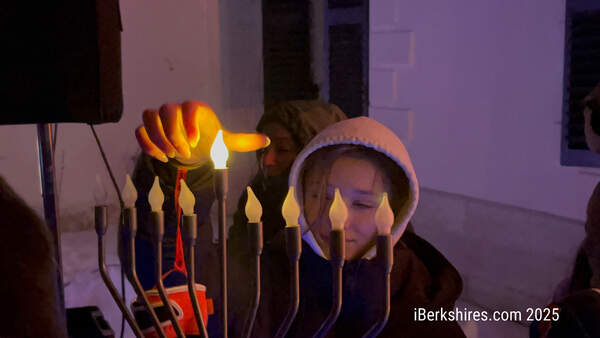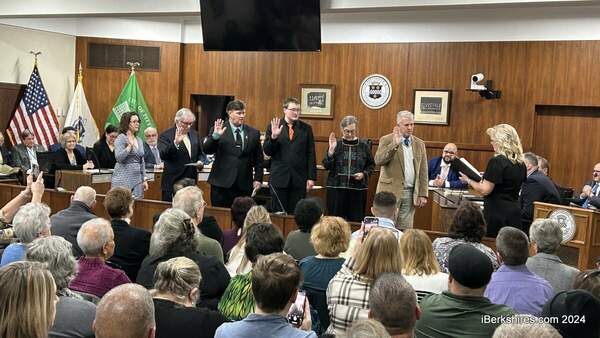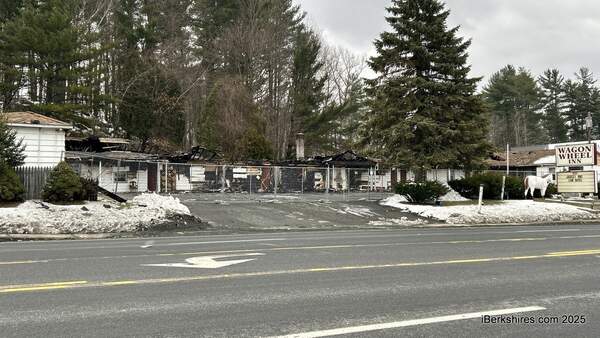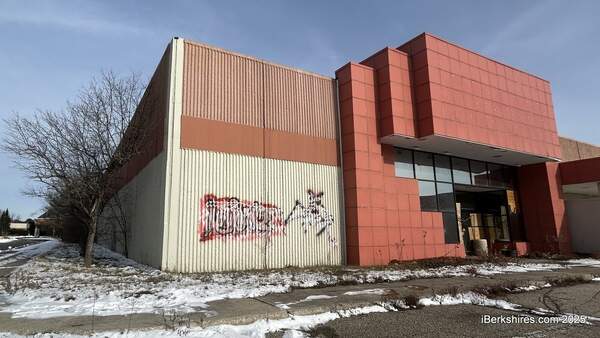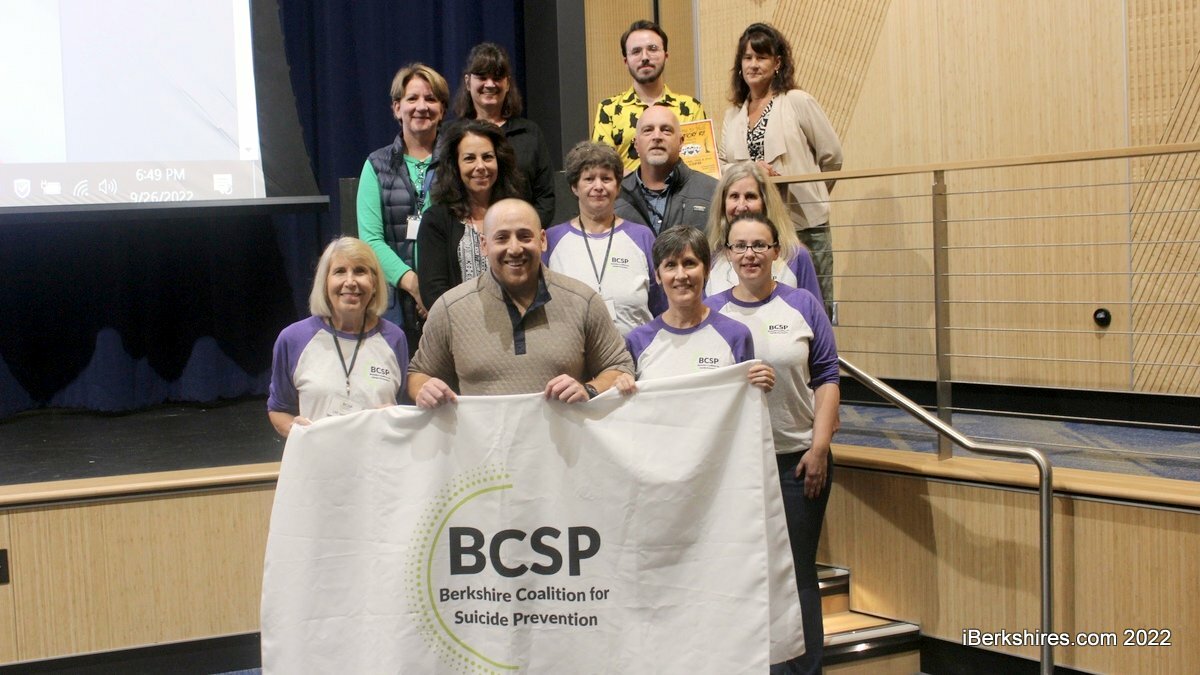
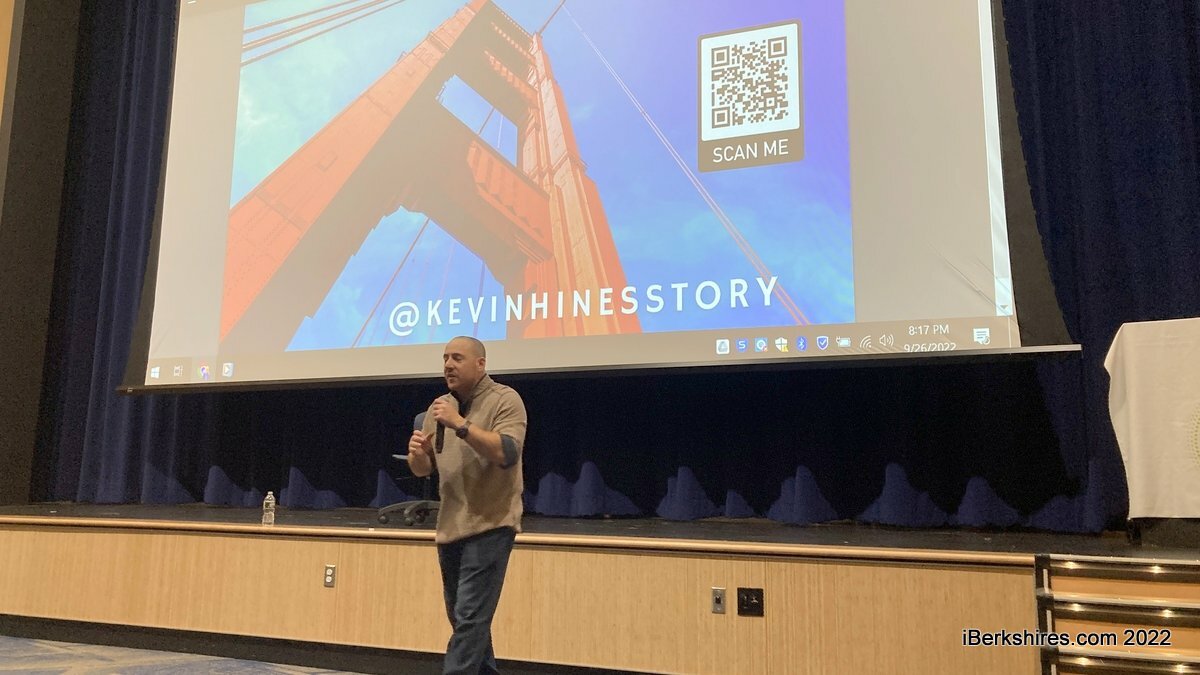
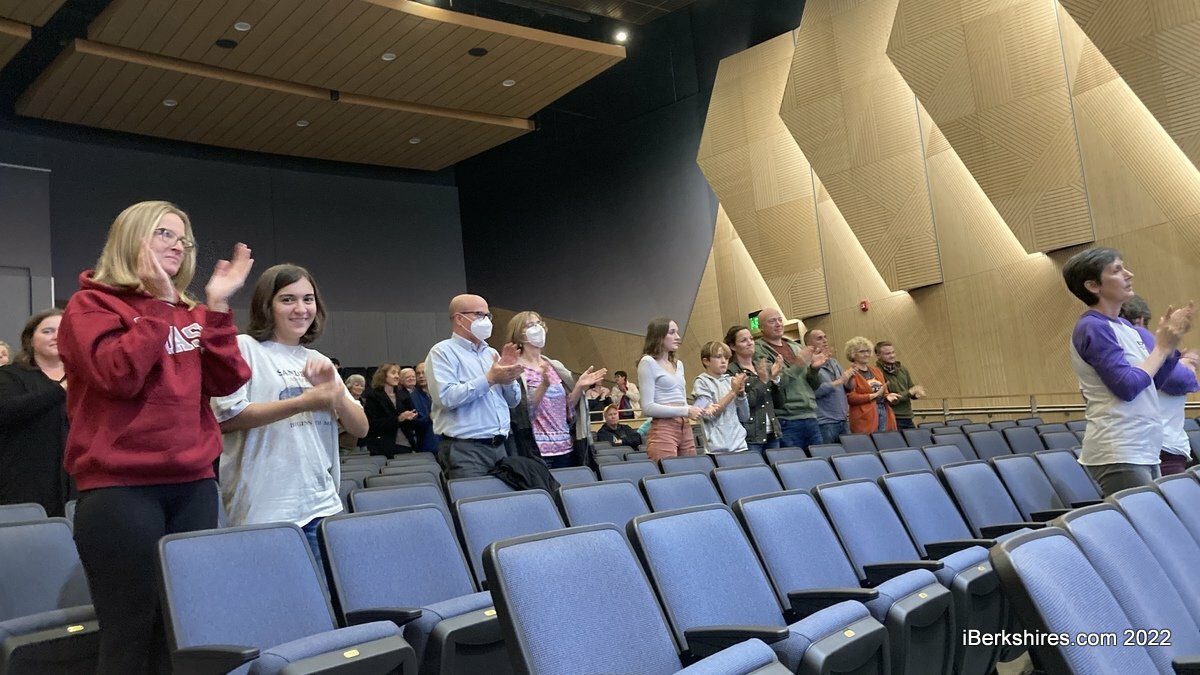
22 Years After Suicide Attempt, Kevin Hines Talks Prevention
DALTON, Mass. — Kevin Hines was just 19 years old when he jumped off the Golden Gate Bridge and immediately regretted the decision.
He survived because a phone call from a bystander and the help of a sea lion and has since dedicated his life to suicide prevention, becoming a best-selling author and a producer.
On Monday, Hines spoke to a crowd of about 60 people in the Wahconah Regional High School auditorium. The prior day marked 22 years since his suicide attempt.
There was complete silence as he detailed his early life of squalor, his adolescent years of masking emotional pain, and when he decided to take his own life.
Ninety-nine percent of people who have jumped off the landmark bridge in its 87 years of existence have died. Hines is one of only 36 survivors.
"I'm never going to attempt again even though for the last 22 years since my attempt, I've lived with chronic thoughts of ending my life. Did you hear me? Chronic thoughts of suicide," Hines explained.
"They plague me, they're a part of me, they'll never take me. I will never die that way because I have the tools to survive those thoughts."
What he wishes he knew 22 years ago is that his thoughts didn't have to become actions. He also wishes he had the insight to open up to someone during a suicidal crisis rather than staying silent.
These tactics have kept him alive since that attempt and though he has had multiple psych ward stays over the years, Hines is here to tell his story today.
The event was organized by the Berkshire Coalition for Suicide Prevention and funded by Purgatory Road, an annual haunted event that raises money for suicide prevention.
"As I look out in the audience tonight, I see a lot of you who have supported us over the years, and together, we've been able to start this conversation about suicide prevention," Purgatory Road co-founder Betsy Nichols said at the beginning of the event.
"Which brings us to tonight."
Hines had "truly humble beginnings," being born to parents who neglected him and his brother because of drugs and living his early life in what he described as a "crack motel."
He and his brother, Jordache, bounced around to different foster homes and under the care of neglectful fosters, his brother succumbed to bronchitis after they both fell ill.
"I was mentally ill from the very beginning," Hines said.
At nine months, he was adopted by Debbie and Patrick Hines and became a sibling to two other adopted children from traumatic backgrounds. He said life as a Hines was beautiful and all three children were "filled with unconditional hope."
At 17, Hines began having paranoid delusions, auditory and visual hallucinations, and mania. Around this time, he said he had gotten very good at burying his pain. Don't bury your pain, he told the audience.
"If you are going to learn one thing from me today, and one thing alone, may I kindly and calmly ask you this: When you leave these doors this evening, that you go out the rest of your natural, important, and oh-so-beautiful lives, do me a solid and never again silence your pain," he said.
"Why? Because your pain is valid. Your pain is worthy of my time and others. And your pain matters simply because all of you do. When you silence your pain, when you bury your struggles, I don't care if you're the toughest person in every room, when you silence your pain, your bury your struggles and they bubble and grow and fester until they burst into things like rage aggression, violence, substance use disorder, eating disorders, suicidal thoughts, ideals or actions."
Ages 17 to 19 were a "very rocky road" for Hines, skyrocketing in manic highs and crashing down into deep depression every week.
"I argue that brain pain is at the very least 300,000 times worse than any physical pain I've ever experienced in my life," he said.
"And I promise you, I have experienced excruciating physical pain my life but it never once came close to the enemies I battle with every day."
On the day of his suicide attempt, Hines had many chances to tell is father that he was having auditory hallucinations telling him to die -- but he did not.
He was attending City College of San Francisco and dropped a majority of his classes, ending his medical coverage. At the time, the college did not have a protocol for questioning students' mental health but Hines said it was later established because of him.
While riding the bus to the Golden Gate Bridge, Hines yelled back at the voices in his head and was not met with kindness from strangers. He made a pact with himself that if just one person asked if he was OK he would live.
"Are you OK?" "Is something wrong?" or "Can I help you?" is all that he needed to hear.
He then wandered the walkway of the bridge crying for about 40 minutes and, still, was not met with kindness from a stranger.
Police officers drove by him twice and did not stop. They are now trained for suicide prevention and save between 50 to 120 lives a year, Hines said.
Milliseconds after Hines catapulted himself off the rail, he knew that he did not want to die.
"The moment my hands left that rail, I had an instantaneous regret for my actions and the absolute 100 percent recognition that I had just made the greatest mistake in my life and it was too late," he said.
Hines fell 220 feet at about 80 miles per hour in four seconds while thinking "What have I just done? I don't want to die. God, please save me."
Hitting the water was like hitting a solid brick wall. It shattered part of his vertebrae and missed severing his spinal cord by two millimeters.
He plunged 70 feet underwater but was able to swim to the surface.
"All I wanted to do was live," Hines said. "That depression was wiped from my mind. The voices were gone."
A woman had seen him jump and called the Coast Guard from her car phone. Now he just had to survive until they arrived and was struggling to say afloat.
Hines described a "very large, very slimy, and very alive" thing circling him and bobbing him to the surface. He thought it was a shark but would later learn from a bystander that it was a sea lion.
He lovingly named it Herbert.
When the Coast Guard pulled Hines out of the water they informed him that the unit had pulled 26 bodies out of the waters beneath the bridge that year. He was the only live person they had retrieved.
"I can tell you with crystal clarity right now, that gave me the greatest pointed perspective I have ever received in my entire life," he said.
"And on that boat, I made a cognitive decision that no matter the pain I would ever be in again, I would never attempt to take my life so long as I should live."
He was happy to report that after 20 years of work, the Bridge Rail Foundation was able to build safety measures on the bridge so that another life is not lost. Hines and his father are founding members of BRF.
Earlier in the day, he spoke to Wahconah High students and reported that many thanked him and said the presentation meant a lot.
"It was a beautiful, beautiful day," Hines said.
Hines' website includes a variety of resources and media including a parents' guide to teen suicide prevention and a 10-step guide for better mental health and well-being.
The National Suicide Prevention Lifeline is 1-800-273-8255. To contact the Crisis Text Line, text HELLO to 741741.
Tags: suicide,

